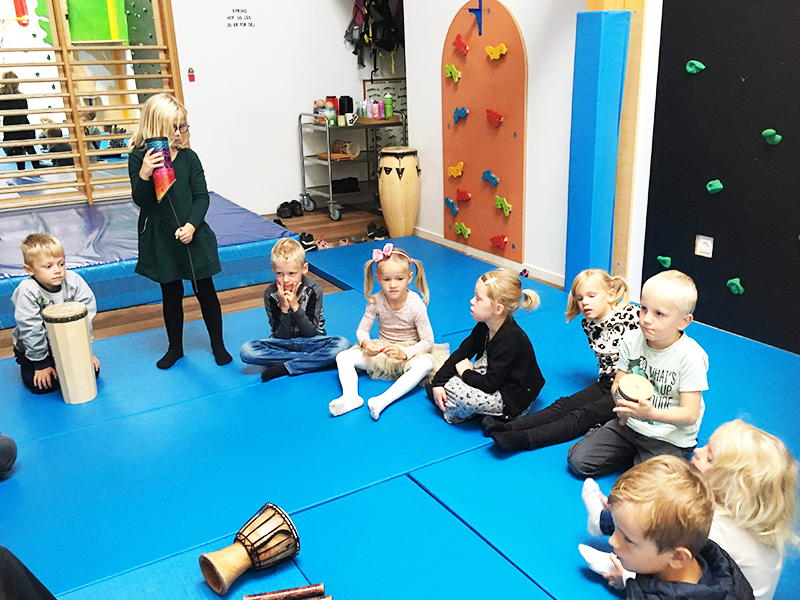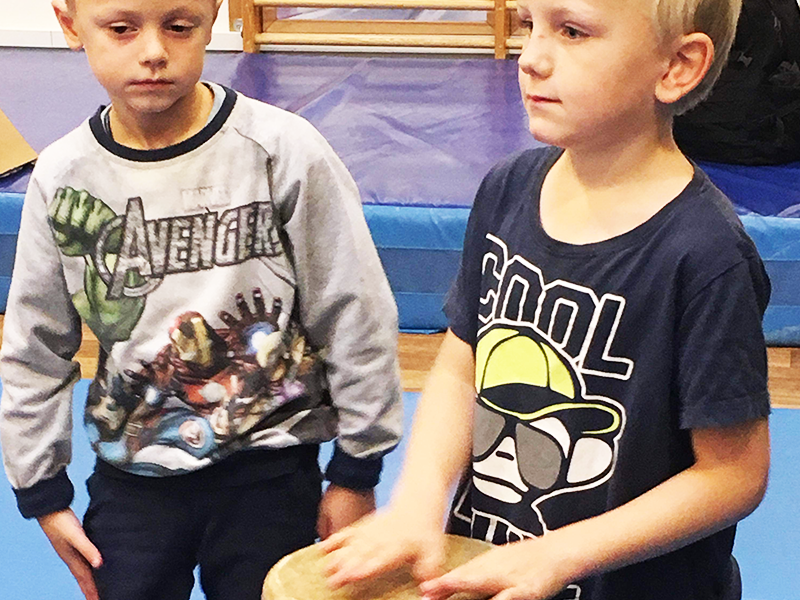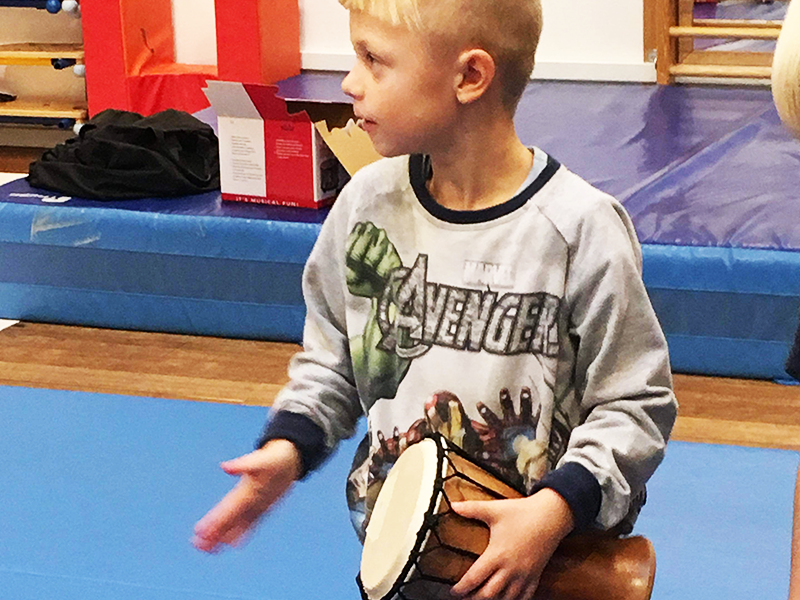MUSIC, DANCE, MOVEMENT, PLAY, AESTHETIC PROCESSES
Region: North
Municipality: Frederikshavn
By: Skagen
Year: 2019
Artist: Viggo Steincke
Day care: Kindergarten Pilekrattet
How has it actually gone in relation to what is described in your SNIP narrative as the purpose of the PlayArt programme and your overall wonder?
When we started up, it was with a Snip madness: Why do we have so many instruments just sitting there, not being used? We want them to be made active together with the children in the Pilekrattet. We want to play with notes, instruments and songs together with an artist, without it having to become anything other than being together in the game and feeling the joy it brings.
How has it actually gone in relation to what is described in your SNIP narrative as the purpose of the PlayArt programme and your overall wonder?
We have played with sounds, instruments and song writing, challenged the approach and use of music and made music one of the everyday activities.
Spontaneous music: we regularly see the children initiating music themselves in the music room, where the musical instruments are (at child height)
We have more often now than before adult-initiated spontaneous and planned music activities. The adults have become more courageous and the children enjoy being together for music.
- More people want to play with music
- We have tried to have age groups around the music
- We have more music and singing on our big screen.
- We have listened to relaxing music when we have played yoga
- Music in the music ball at the playground is a hit
- How has the atmosphere in the day-care centre changed, if at all?
Music is more natural in everyday life.
Do the children play different games and with different people than they usually do?
It's hard to say whether it has something to do with the LegeKunst course or whether it's because you're opening your eyes to something new.
Do educational staff act differently than they did before?
Staff team up in pairs for several exciting activities and sessions. They reflect on the quality of what they do in the programme and evaluate the programmes better and repeat the activity/game several times. Here I am not thinking "only" of music, but of the approach to working
Are art, culture and aesthetic processes used in different ways than before?
The Pilekratt staff are good at taking children on experiences in the artistic, aesthetic and cultural processes. We have taken away that our evaluation culture has improved and we use the evaluations to actively improve the pedagogical processes we have with the children in games and activities.
Do pedagogical staff talk differently about play and education?
Way back in the street of childhood, where play was the focus, it changed our awareness of the playful approach to life. The LegeKunst programme has cemented the centrality of this (letting go of control).
How have children's perspectives been expressed/included?
In the process, they participated in singing and rhyming and dancing steps. The children are also now very involved in the games and songs.
How does the PlayArt programme contribute to the day care curriculum?
Music becomes part of the curriculum theme when we describe it, and music as a cultural arena and play community part of the same.
What has it been like to work with action learning?
So good that we want to use it more - for example through BMMK, and then came corona.
The good thing is: We have no template. It's the process that should be creative and evolving, so never mind the final product - it's a great way to work.
It is rewarding to have a competent person who can contribute with quality in the first phase of the process, where you yourself are uncertain. It was good that we had two teams running in parallel. It gave focus on the differences from group 1 to group 2. Friday was common for the whole group. Here they talked and shared songs and music with each other and took ownership of what they were playing with in the music.
How will we use the experience in further work?
We will consciously opt for reflective collaborations between staff.
Consciously choose smaller groups for some of the games and activities we do with the children.
Take more time to prepare what the children will get out of the activities
That action learning can also be with a colleague from your own house.
What are we still curious about?
Seizing children's curiosity, listening to what they are interested in. To renew themselves with new games, songs and ideas.
Idea: chicken song, because we are now going to feed the chickens every day, and it would be nice to sing while we go
By Head of Department Ulla Egholm
click on the picture to see a larger version






